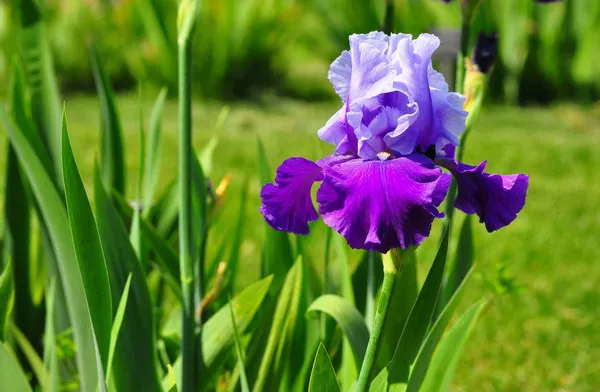Gardening enthusiasts often face the dilemma of when to plant flowers after using herbicides like Roundup. While Roundup is an effective weed killer, its active ingredient, glyphosate, can linger in the soil and affect the growth of desired plants. Understanding the proper waiting period and taking necessary precautions is crucial for successful flower cultivation. In this comprehensive guide, we will delve into the factors influencing the waiting time, potential risks, and best practices for planting flowers after using Roundup.
Glyphosate Breakdown in Soil
Glyphosate, the primary component in Roundup, is a non-selective herbicide that targets a broad spectrum of weeds. After application, glyphosate is absorbed by the foliage and translocated to the roots, disrupting the plant’s growth processes. While it is effective in eliminating unwanted vegetation, it raises concerns about its residual effects in the soil.
The breakdown of glyphosate in soil depends on various factors, including soil composition, temperature, moisture, and microbial activity. Generally, glyphosate has a half-life ranging from a few days to several weeks. During this period, the herbicide degrades into its metabolites, eventually becoming less potent.
Waiting Periods for Different Flowers
The waiting period before planting flowers after using Roundup varies based on the specific type of flower and environmental conditions. Understanding the characteristics of your chosen flowers and the local climate is essential for determining the optimal waiting time. Here’s a general guideline for waiting periods for commonly cultivated flowers:
1. Annual Flowers: Annuals, such as marigolds and petunias, usually require a shorter waiting period compared to perennial flowers. A waiting time of 7 to 14 days is often sufficient, provided that environmental conditions are favorable.
2. Perennial Flowers: Perennials, like roses and lilies, may need a more extended waiting period. It is advisable to wait at least 14 to 21 days before planting perennial flowers to ensure the soil has adequate time to break down residual glyphosate.
3. Native Wildflowers: If you’re planning to cultivate native wildflowers, which are often more sensitive to herbicides, a waiting period of 21 to 30 days is recommended. This extra time allows for complete degradation of glyphosate, minimizing the risk of adverse effects on these delicate plants.
Factors Influencing Waiting Periods
Several factors influence how long you should wait before planting flowers after using Roundup. Understanding these variables can help you make informed decisions for your specific gardening scenario:
1. Soil Composition: Different soil types have varying capacities to absorb and break down glyphosate. Sandy soils typically allow for faster degradation, while clayey soils may retain the herbicide for a more extended period.
2. Temperature and Weather Conditions: Warmer temperatures generally promote faster microbial activity and, consequently, quicker glyphosate breakdown. However, extreme heat can also stress newly planted flowers. Aim for moderate temperatures and consider weather patterns when planning your flower planting.
3. Microbial Activity: Soil microbes play a crucial role in breaking down glyphosate. Healthy soil with a diverse microbial population tends to facilitate faster degradation. Adding organic matter to the soil can enhance microbial activity and promote a more favorable environment for flower planting.
4. Glyphosate Formulation: The specific formulation of the Roundup product used can impact the waiting period. Some formulations may contain additional ingredients that influence the persistence of glyphosate in the soil.
Precautions Before Planting Flowers
To ensure the success of your flower garden and minimize potential risks associated with Roundup use, consider the following precautions:
1. Read and Follow Label Instructions: Always follow the manufacturer’s instructions on the Roundup label. This includes application rates, recommended waiting periods, and any specific guidelines for using the product in flower beds.
2. Choose Glyphosate Alternatives: If possible, explore alternative weed control methods that do not involve glyphosate. Mulching, hand weeding, and using natural herbicides can be effective options that pose fewer risks to flower cultivation.
3. Test Soil Before Planting: Conduct a soil test to assess glyphosate residue levels before planting flowers. Soil testing provides valuable information about the presence of herbicide residues and helps you make informed decisions about the timing and safety of planting.
4. Amend Soil with Organic Matter: Improve soil health by incorporating organic matter, such as compost or well-rotted manure. Organic matter enhances microbial activity and supports the breakdown of glyphosate residues in the soil.
5. Choose Resistant Flower Varieties: Opt for flower varieties known to be less sensitive to glyphosate. Research and select plants that are resilient to herbicide residues, reducing the likelihood of negative effects on their growth.
Monitoring and Troubleshooting
After planting flowers, closely monitor their growth and address any issues promptly. Signs of glyphosate toxicity in plants may include stunted growth, yellowing leaves, or unusual discoloration. If such symptoms occur, take the following steps:
1. Isolate Affected Plants: If only a few plants exhibit signs of distress, consider isolating them from the rest of the garden to prevent the issue from spreading.
2. Provide Adequate Water: Ensure plants receive sufficient water to support their growth. Well-hydrated plants are better equipped to cope with potential stressors.
3. Amend Soil as Needed: If issues persist, consider further soil amendments to improve microbial activity and create a more favorable environment for plant growth.
4. Seek Professional Advice: If problems persist or worsen, seek guidance from local horticultural experts or agricultural extension services. Professional advice can help diagnose specific issues and provide tailored solutions.
Conclusion
The question of how long after using Roundup can you plant flowers requires careful consideration of various factors. By understanding the dynamics of glyphosate breakdown, waiting periods for different flower types, and implementing necessary precautions, gardeners can strike a balance between effective weed control and successful flower cultivation. Remember to follow label instructions, choose flower varieties wisely, and monitor plant health to ensure a thriving and vibrant garden.


